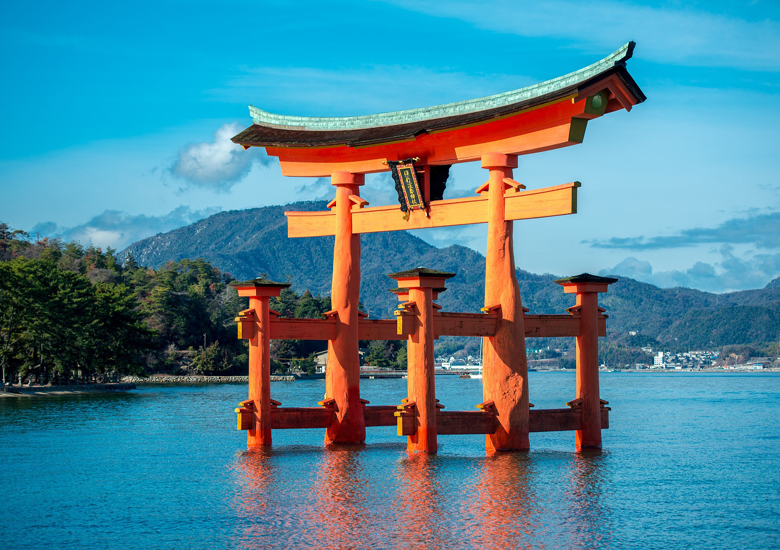Honshu . is the largest and most populous island of Japan.
Located south of Hokkaido across the Tsugaru Strait, north of Shikoku across the Inland Sea, and northeast of Kyushu across the Kanmon Straits. The island separates the Sea of Japan, which lies to its north and west, from the North Pacific Ocean to its south and east. It is the seventh-largest island in the world, and the second-most populous after the Indonesian island of Java.
Honshu had a population of 103 million as of 2005, mostly concentrated in the coastal lowlands, notably in the Kanto plain where 25% of the total population resides in the Greater Tokyo Area. As the historical center of Japanese culture and political power, the island includes several past Japanese capitals, including Kyoto, Nara, and Kamakura. Much of the island’s southern shore forms part of the Taiheiyo Belt, a megalopolis that spans several of the Japanese islands.
Most of Japan’s industry is located in a belt running along Honshu’s southern coast, from Tokyo to Kyoto, Osaka, Nagoya, Kobe, and Hiroshima; the economy along the northwestern Sea of Japan coast is largely based on fishing and agriculture. The island is linked to the other three major Japanese islands by a number of bridges and tunnels. Its climate is humid and mild.
Geography :
- The island is roughly 1,300 km (810 mi) long and ranges from 50 to 230 km (31 to 143 mi) wide, and its total area is 225,800 km2 (87,200 sq mi), 60% of the total area of Japan, making it slightly larger than Great Britain. Its land area has been increasing with land reclamation and coastal uplift in the north, but global sea level rise has diminished these effects.[citation needed] Honshu has 5,450 kilometres (3,386 mi) of coastline.
Mountainous and volcanic, Honshu experiences frequent earthquakes (the Great Kanto earthquake heavily damaged Tokyo in September 1923, and the earthquake of March 2011 moved the northeastern part of the island by varying amounts of as much as 5.3 m (17 ft) while causing devastating tsunamis).
The highest peak is the active volcano Mount Fuji at 3,776 m (12,388 ft), which makes Honshu the world’s 7th highest island. There are many rivers, including the Shinano River, Japan’s longest. The Japanese Alps run the length of Honshu, dividing the northwestern (Sea of Japan) shore from the southeastern (Pacific or Inland Sea) shore the climate is generally humid subtropical in the southern and coastal parts of the island and humid continental in the northern and inland portions.
Bridges and tunnels :
- Honshu is connected to the islands of Hokkaido, Kyushu and Shikoku by tunnels and bridges. Three bridge systems have been built across the islands of the Inland Sea between Honshu and Shikoku (Akashi Kaikyo Bridge and the Onaruto Bridge; Shin-Onomichi Bridge, Innoshima Bridge, Ikuchi Bridge, Tatara Bridge, Omishima Bridge, Hakata–Oshima Bridge, and the Kurushima-Kaikyo Bridge; Shimotsui-Seto Bridge, Hitsuishijima Bridge, Iwakurojima Bridge, Yoshima Bridge, Kita Bisan-Seto Bridge, and the Minami Bisan-Seto Bridge), the Seikan Tunnel connects Honshu with Hokkaido, and the Kanmonkyo Bridge and Kanmon Tunnel connects Honshu with Kyushu.

